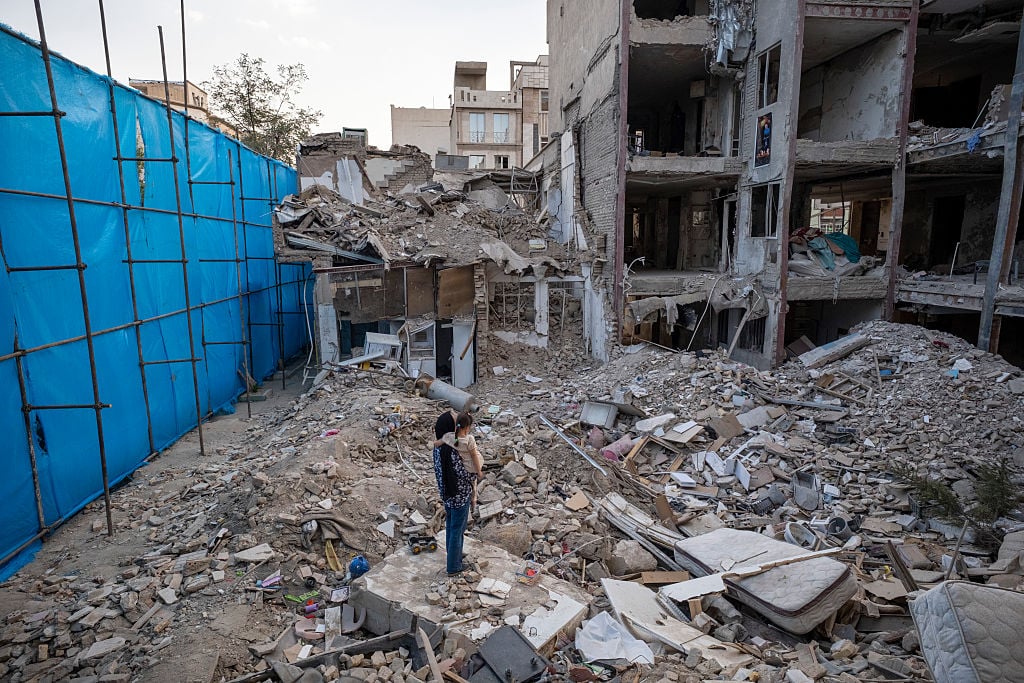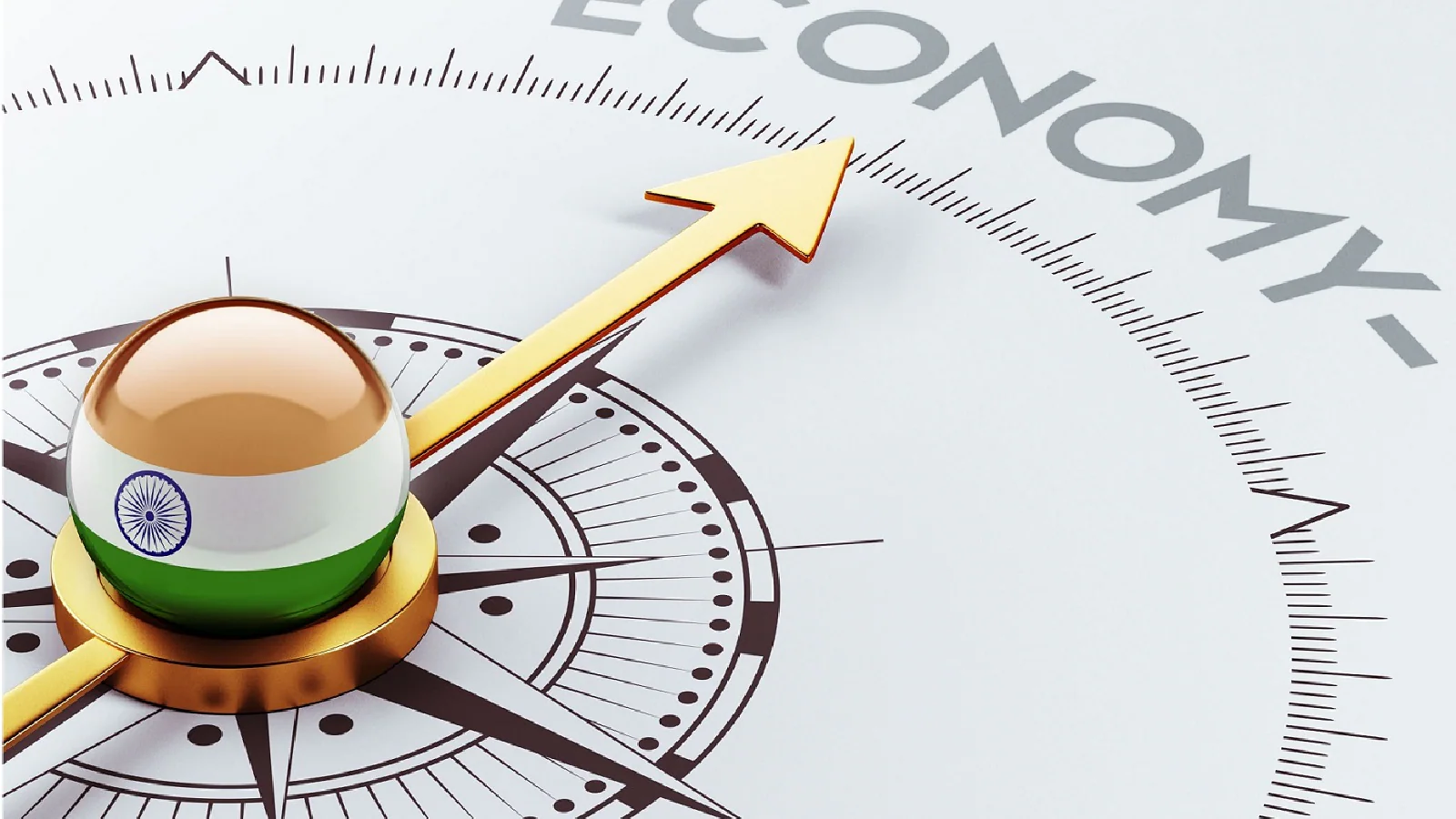By Bahareh Badiei,Ghoncheh Ghavami
Copyright truthout

As we mark the third anniversary of Jina (Mahsa) Amini’s death in Iran and the uprising that sparked the global Woman, Life, Freedom movement, the voices that courageously challenged authoritarianism at home find themselves navigating an increasingly complex geopolitical landscape. In response to the June 2025 war between Israel and Iran, mainstream media outlets — both Persian-language and international — largely fell into predictable camps, either backing their preferred state actor or maintaining strategic silence about favored governments’ actions. Yet this binary framing has systematically erased the perspectives of Iranian leftist feminists who, even while facing brutal repression from their own government, refuse to be co-opted into supporting external military intervention.
This erasure of grassroots voices occurred even as many civil society organizations and groups in Iran (including the Iranian Writers’ Association, teachers’ unions, workers’ organizations, and others) explicitly issued statements condemning Israel’s attack on Iran, while simultaneously acknowledging the oppression they had suffered under the government of the Islamic Republic.
Similarly, Iranian leftist feminists, who embody the anti-authoritarian spirit of the Woman, Life, Freedom movement, offer a crucial third way: rejecting both domestic oppression and imperial intervention. On this anniversary, their perspectives show how grassroots feminist movements navigate the false choices presented by state powers, maintaining solidarity with oppressed peoples while refusing to legitimate any form of domination.
Independent and progressive voices of Iranian civil society have long faced a persistent crisis of visibility and representation, and not only during wartime. On one hand, the material constraints of life in Iran and the repression and pressure from security institutions prevent widespread grassroots organizing. This has forced activists to conduct their activities clandestinely, in the form of small informal groups and circles, avoiding media coverage to reduce risks. On the other hand, international mainstream Persian-speaking news outlets and prominent opposition currents perpetuating “regime change” rhetoric ignore and marginalize these voices, with the goal of transferring representation and agency for change from freedom-seeking and progressive movements inside Iran to forces outside its borders, and in moments like the 12-day war, to foreign governments like Israel. These currents generally represent struggles inside Iran only when they can be appropriated to serve colonial and right-wing agendas.
We witnessed a similar process of appropriation after the beginning of the Woman, Life, Freedom movement in 2022. A progressive movement rooted in popular power and feminist struggle became subject to widespread arrests and repression of civil activists. Over time, the slogan of “Jin, Jîyan, Azadî” (translated as “Woman, Life, Freedom”) — first chanted by women’s rights activists at Amini’s funeral in Saqqez, Kurdistan, then spreading to other cities — was co-opted through appeals to Western governments, was responded to with reactionary slogans like “Man, Homeland, Prosperity” and then ultimately emerged from Netanyahu’s lips before he rained down missiles on the Iranian people. Recently, images were published of an Israeli female flight technician who had written on munitions used in the aerial attack against Iran: “In memory of Mahsa Amini.”
Questioning the instrumentalization of Global South feminist demands for colonial agendas, Zahra Ali, an Iraqi feminist, wrote about the silence of Western supporters of Woman, Life, Freedom after Israeli attacked Iran:
As Israeli bombs are falling on Tehran, killing hundreds of people, where are the voices of the Western feminists who supported the Women, Life, Freedom so loudly in demanding the end of the Israeli bombing? Are Iranian women only worth defending when it suits white feminists’ colonial impulse to liberate brown women from brown men? Isn’t the right not to be bombarded and massively killed a woman’s right too?
Immediately after Israel’s attack, women and feminist activists inside Iran and in the diaspora, began taking positions and speaking out against war, both on social networks and in the mass media. While major Persian-language outlets abroad and dominant social media narratives emphasized Israel’s “targeted” attacks and downplayed the killing of civilians, most published reports about displacement, the destruction of residential areas, the horrific death toll, and the resistance and public care that took shape were written by feminist journalists and women’s rights defenders in Iran. Such opposition to Israeli military aggression stood as a testament to a different kind of feminist politics.
Although during wartime, agency necessarily diminishes amid the struggle for survival, and in many reports and narratives, rhetoric about the suffering of women and children and the massacre of “innocent people” takes center stage, the opposition of leftist feminist women to war must be understood beyond a moral and emotional approach predicated on pacifism and violence-avoidance that might lend itself to a certain essentialism that emphasizes the woman as the life-nurturing body and bearer of love and motherhood rather than as a political subject carrying a history of struggle.
Of course, highlighting this necessity does not mean devaluing roles that are traditionally coded as feminine, or negating their capacity for struggle and mobilization. As Johanna Brenner notes, historically, many women who joined antiwar movements were not necessarily followers of particular ideologies or believers in specific feminist principles; some even explicitly distanced themselves from feminism. Some were simply prompted by familial and maternal roles to enter anti-armament and antiwar struggles with the goal of protecting their children’s lives, and succeeded in widespread mobilization.
However, our leftist feminist antiwar approach sees oppression against women in relation to other systems of domination and redefines “the feminine” in a way that rejects traditional gender roles and ideologies. In an effort to move beyond a depoliticized understanding of women’s opposition to war, we sat down for a conversation with four feminist activists living in Iran who explicitly leveraged social media platforms to oppose the Israeli attacks from the early days of the war. The activists — who are identified here by the pseudonyms Sama, Arnavaz, Ella, and Darya — asked to remain anonymous due to the security risks they face under Iran’s repressive political climate. These feminists — ranging from journalists and children’s rights activists to labor organizers and social workers — are based in Tehran and other cities across Iran and have years of activist experience in the country. They were all arrested during the Woman, Life, Freedom movement and spent days and months in prison. The following text is the result of this collective conversation.
Bombing Women Into Liberation and the Long-Standing Appropriation of Feminist Struggles
For many feminist activists, the Woman, Life, Freedom movement’s roots run deep through decades of struggle. Niloofar Hamedi and Elaheh Mohammadi — the two journalists who initially covered the news of Jina Amini’s death and funeral — were not only witnesses and narrators, but also feminist activists with many years of experience fighting for women’s rights. Both were arrested after they covered Amini’s story, initially charged with “collusion and assembly against national security” and “propaganda activity against the regime” and sentenced to 13 and 12 years respectively. They remained in prison for 17 months (their sentences were first reduced to five years each after a court acquitted them of further charges of “collaboration with the United States,” and in February 2025 they were pardoned). The women who delivered the feminist statement at Amini’s graveside belonged to Zhivano, a Kurdish women’s rights collective that had long stood against the twin violence of femicide and state oppression in Iran’s Kurdish regions — an act of resistance that would soon lead to their own arrest.
The slogan’s expansion beyond Kurdistan to other regions across the country bore the same fingerprints of organized resistance. When Tehran’s first street protest was mobilized in 2022 (after the initial presence of feminist activists and other women in front of Kasra Hospital where Jina was hospitalized), it emerged not spontaneously, but from established feminist networks that had weathered decades of repression. The call designated a site of popular protest for those ready to take to the streets: “In solidarity with Jina’s family and the people of Kurdistan, we gather to show our protest against compulsory hijab and cry out our demand for women’s liberation, reclaiming our life and freedom.” The publication of this call and the crucial role of Iran’s feminist activists in the initial days led to widespread arrests of women’s rights defenders in Tehran and other Iranian cities.
For many feminist activists we spoke to, perhaps the most painful aspect of the backlash was watching their symbols and slogans appropriated to justify the very violence they opposed. Israeli Prime Minister Benjamin Netanyahu had been invoking the “Woman, Life, Freedom” slogan in Farsi even before the war began, but when he continued using it to justify military strikes, activists felt a profound sense of violation. This appropriation of gender struggles and women’s liberation for colonialist agendas is what critics call “imperial feminism” — the use of feminist rhetoric to justify military intervention. As feminist writer Nadeine Asbali observed, Western feminists, along with right-wing politicians, once again claimed “to care about Muslim and Iranian women’s rights during Israel’s assault, so much so that they would bomb them into liberation.”
This imperialist appropriation revealed a challenge that feminist activists must navigate: maintaining their political analysis while watching others co-opt the collective imagination and possibilities that liberation movements had built over years of activism. The very movement that had emerged from grassroots efforts was being stripped of its revolutionary content and deployed to justify the bombing of those who created it. “All those years of movements that had formed, with Woman, Life, Freedom being the closest, all the theorizing, the personal and collective experiences shared, the collective imagination and possibilities we had considered; what happened to all of that?” Ella, a journalist and feminist activist in Tehran, asked, in an interview with Truthout.
Imperialist feminism, far right politics, and the global military industry appropriate symbols of resistance while reproducing the same patriarchal logic that sees violence as the ultimate solution. These are the hegemonies that force many people to choose between different forms of domination rather than imagine alternatives to domination itself.
Iranian Leftist Feminists Reclaim Their Narratives of Resistance
We need an intersectional solidarity analysis to understand this dynamic, especially during wartime, when different systems of oppression — patriarchy, militarism, nationalism, and authoritarianism — reinforce each other. Sama, an Iranian children’s rights activist and feminist, told Truthout:
The far right politics has been riding the wave of justice uprisings and movements as a tactic for a long time. If we truly believe that we in the Middle East share a common fate, we can certainly find connections and commonalities in our lives, struggles, and destinies, and find ways to theorize these commonalities. Identifying these patterns is one of the things that I, as a feminist, should always strive to do. I turn this arrow toward myself — probably I should have [recognized this] on the first day when the precision strikes happened [by Israeli forces]. It was naive to think that these precision strikes would end there and wouldn’t lead to the appropriation of Woman, Life, Freedom.
Rather than treating each war — be it the genocide in Palestine or Israel’s war with Iran — as isolated, an intersectional solidarity approach recognizes how imperialist powers systematically appropriate liberation movements across the Global South. It requires what Sama calls “paying attention to similarities and finding patterns” — a practice of comparative analysis that connects the experiences of Palestinians, Iraqis, Afghans, Syrians, Lebanese, Yemenis, and Iranians within a broader framework of resistance to both local authoritarianism and foreign intervention.
The leftist and anti-colonialist feminists we spoke to urged global leftist movements to embrace this perspective, recognizing that feminist analysis in the Middle East cannot be developed in isolation from regional liberation struggles. They, and we, urge our leftist comrades in the North and South to refuse the global left’s long-standing practice of “geopolitical othering” toward Iran that seeks to undermine movements like Woman, Life, Freedom by suggesting they are Western propaganda campaigns. We must center the political standpoints of on-the-ground activists, grassroots collectives, and other under-recognized voices emerging from Iran today instead of referencing the Islamic Republic’s pseudo-anti-imperialist narrative, and to affirm the necessity of feminist and leftist coalition-building.
An antiwar and intersectional feminist theory emerges through what Arnavaz, a feminist researcher and activist based in northern Iran, and Ella (the journalist and feminist activist) call “reading the lives of people whose living spaces are different from ours,” though their struggles overlap and intersect with ours. Such a process builds solidarity through shared analysis rather than imposed solutions.
Take as an example the support of Chilean feminists, who following Israel’s attacks on Iran, sent messages of solidarity to Iranian feminists, declaring: “From the South, we proclaim our commitment to anti-colonial, anti-patriarchal, and transnational solidarities, and we unite our voices with yours to become a cry against genocide, war, and dictatorship in Iran”; or the statement from a group of Woman, Life, Freedom activists in solidarity with the people of Palestine and their struggle to reclaim the right to “life,” which invites other activists and those committed to the “Jin, Jîyan, Azadî” movement to connect their actions and voices to the resounding voice of Palestine and its right to self-determination.
Navigating Contradictory Emotions During and After the War
In a television interview, the Iranian President Masoud Pezeshkian said he was greatly surprised to see women on the streets holding pictures of the Islamic Republic’s leader during the 12-day war with Israel: “Completely unveiled women, with whom we had very bad dealings, stood behind the leadership.” It was predictable that the ruling system would try to appropriate antiwar positions for its own benefit. For this reason, many feminists, including the leftist feminists in this conversation, tried from the very first days of the war to explicitly target internal despotism while still standing against the war and Israeli military attacks.
Accounting for the complexities of this double rejection, Sama said:
In the first moments of the war, as someone living in this country, seeing the names of our oppressors on the list of the killed, even though I am an anti-colonialist and antiwar feminist, I experienced a feeling, perhaps a momentary satisfaction. This was my first encounter with war, a moment when it hadn’t yet become concrete, its image wasn’t complete — civilians killed and homes and streets destroyed. A little later, this image and concept of war became complete. The political stance and the emotional experience I had as an oppressed person were different from each other.
“This initial contradictory feeling is something we must definitely talk about,” Arnavaz added. She continued:
Our clear and feminist position is “no to war.” Paying attention to these feelings means that while we take a position against Israel with intensity and severity, we must be careful to maintain our boundaries with the Islamic Republic and its supporters, and not ignore them under the pretext of the current sensitive moment.
This tension reveals what feminist scholar Sara Ahmed discusses in her book, The Cultural Politics of Emotions, referring to how emotions function as political forces, where personal experiences intersect with broader struggles for social change. When oppressed subjects experience contradictory feelings toward their oppressors during external attacks, they navigate the complex terrain between victimhood and agency, between justified anger and principled opposition to violence.
In the words of Darya, a feminist social worker and children’s rights activist in Iran:
For years, we were victims of these individuals — we were killed, imprisoned, humiliated — and this was a feeling, our human reaction to systematic oppression, to the suppressed anger and humiliations we could never respond to. This cooling of the heart comes from the desperation we experienced. This feeling is not in conflict with feminism because, despite these feelings, we can and were able to remain committed to our feminist principles. But while standing by our positions, we don’t need to censor our feelings of anger as injured victims.
Iranian leftist feminists in our conversation refused to sanitize their emotional responses, while still maintaining ethical clarity about military violence. They rejected both the patriarchal demand to suppress anger and the imperialist demand to channel that anger toward supporting external military intervention.
Darya continued:
We must be able to listen to people’s anger, pain, and suppressed reactions, and we feminists must have the courage to talk about this and recognize the complexity of the situation and the hidden layers of our identity as victims. We must talk about how we can simultaneously say these feelings should not become a tool for legitimizing Israel’s attack and should not be used as an instrument to justify it. In fact, with these very feelings, we show our agency — we are not passive, we are angry. We despise those who oppress us, and we oppose Israel’s attack. And in this same trajectory, we specify our own alternatives.
Building Infrastructures of Care and Telling Our Own Stories
Central to feminist resistance is the deliberate rejection of victimization narratives that reduce women to symbols of suffering rather than recognizing them as political actors with analytical capacity. This perspective emerges from years of collective organizing that prioritized agency over appeals for external salvation, developing what feminists call “radical care” — a form of resistance rooted in the understanding that preserving life and building alternative structures is itself a political act under conditions of militarization and state violence.
Iranian feminists in our conversation described radical care as fundamentally different from charity or humanitarian aid models. “Radical care isn’t about helping victims. It’s about recognizing everyone’s capacity for resistance and creating the conditions for that resistance to flourish,” explained Darya. They are not inventing something new. Rather, these feminists have been learning from liberation movements that understand care and struggle as inseparable. “Our feminism teaches us that the way we treat each other in the struggle prefigures the world we’re trying to create,” said Arnavaz.
They operationalize this through concrete practices that sustain life and resistance simultaneously. As Darya reflects on lessons learned from the war:
In reality, the state did nothing, and during those 12 days I was thinking how I wished we had formed our local groups beforehand and had collectives for such crisis situations.… Some families, such as daily wage workers, would lose their jobs during wartime, and now food supplies could be delivered to them, and assistance could be provided in this way. But we hadn’t organized beforehand. This reminded me again of the importance of forming local committees in advance and their existence, so that in practice we could better carry out this care work.
These activists recognize that sustainable resistance requires not just responding to crises as they emerge, but also creating the organizational structures that can expand and adapt during moments of intensified repression. However, the gendered dimensions of this labor cannot be ignored.
Darya reflects on the unequal distribution of care work: “Like always, much of this emotional and care work fell disproportionately on women. After the war, I observed severe emotional and psychological exhaustion among my friends who had taken on this burden.”
We recognize that leftist feminist fighters in Iran are not waiting for salvation to arrive through foreign missiles or regime change from above. This feminist politics transcends essentialist notions that position women as peaceful victims whose “innocent” lives need protection or as natural caregivers bound by family ties. Instead, it grounds itself in a political analysis that understands gender oppression as structurally interconnected with state violence, exploitation, and imperialist domination.
Both of us who wrote this piece, writing from diaspora, recognize ourselves in this struggle against erasure. Like our comrades inside Iran, we refuse to let others define our liberation for us.
“We can’t let others write our story for us,” Sama and Ella insist. “The narrative must come from us, from our organizing, from our understanding of what liberation actually means.”
As Aya, an Iraqi journalist and women’s rights activist, told Iranian women in an interview with Elaheh Mohammadi, the same journalist who was imprisoned after covering Jina Amini’s funeral, “I urge the women of Iran: do not let anyone dictate your story. These narratives are our invaluable assets. But today they’re being taken from us; we are being used, without any concern for our lives.”
The narrative belongs to those who risk everything to write it — in the streets, in prisons, in quiet moments when they choose care over revenge, organizing over despair, and a collective vision over imposed freedom.



